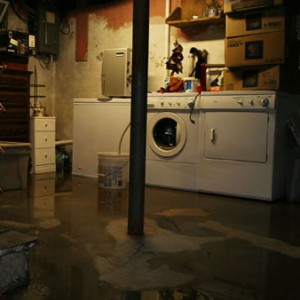ALL WATER IS BAD
It doesn’t matter how much water you have in your basement, it all needs to be taken seriously. It may be one inch or six inches, it’s all bad. All moisture, whether it is a slight dampness or obvious puddles, can cause hidden hazards – like mould – to fester down the road.
PUMP IT OUT!
Getting rid of the water should be a top priority. A motorized sump pump and hose can do the trick if a professional is unavailable and you have a safe source of electricity or a generator. Sump pumps can be rented at some hardware stores.
A wet vacuum is handy during small spills. Mops, towels and buckets are a manual backup and can be used if nothing mechanical is available.
Don’t dump the water down your drain unless you are sure there is no sanitary or storm sewer backup in your neighbourhood. Otherwise, dump buckets on the front lawn or a permeable surface that will drain into a storm sewer on the road rather than back into your house.
Otherwise, call in the experts to remove the water quickly. The faster the water is drained, the smaller the risk to your possessions.
SAVE ELECTRONICS
While the water is being pumped out, it’s moving time. Arrange a crew of relatives, friends and neighbours to help empty out the flooded area. Prioritize the items you want to save, especially if there are electronics that haven’t gotten wet but could be ruined by the humidity.
If the flood is a sewer backup, meaning the water came out of toilets, showers and bathtubs, any item touched by waste water must be discarded because it’s a health hazard. That is why it’s best to store treasured items in plastic bins that can be cleaned instead of cardboard boxes.
DISCARD THAT COUCH!
A homeowner should consider items made of cloth, especially carpets and couches, as lost to the flood. Clothes can be washed or dry cleaned at a huge expense. A homeowner should label items put out for trash as flood damaged by waste water if they are sitting at the curb to warn any garbage pickers of the hazard.
REMOVE DRYWALL
Drywall has a tendency to act like a sponge. Even if the flood was only an inch high in the basement, water may have soaked into the drywall up to four of five inches above the flooded area. If the basement is finished with drywall, cut away water stained drywall and remove any insulation. If in doubt, discard. You don’t want to risk mould growth just to reuse a small piece of insulation. RC White can come in and take care of this for you.
DRY AREA
After all water has been removed, the waterlogged area has to be dried. Bring in fans, a dehumidifier and open windows. It will take hours, if not days, to dry the soaked area.
Remember to call or Contact RC White as soon as you find water in your basement or crawl space.
